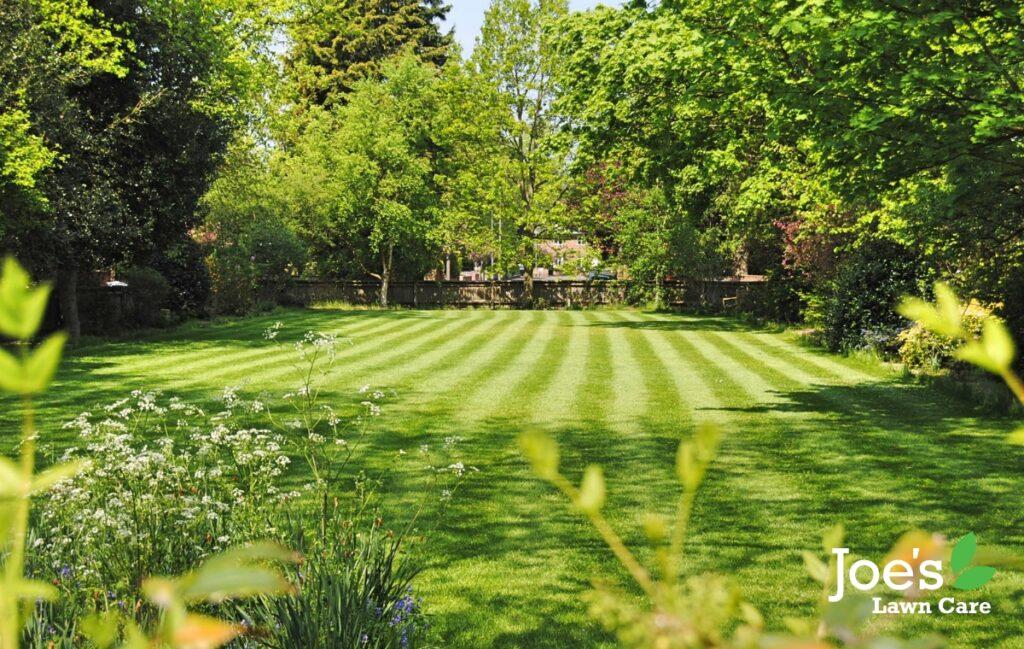These 7 things that will make you better at Lawn Care:
Inside the indeterminate walls of the Internet, a plethora of useful services and learning tools await. From baking bread to changing a car tire, learning a language to brewing your own beer, there’s nothing you can’t learn through the infinite resources of the world wide web, and we thought we’d add to this information library by handing over some of the sterling nuggets of knowledge to make you even better at lawn care.
You see, when it comes to lawn care, there are an almost daunting number of factors to consider. From grass type to watering frequency, mowing techniques to fertilisation schedules, weed control and about a thousand other tidbits of know-how. Luckily for you, these 7 things will make you better at lawn care have been narrowed down to help you maintain a beautiful, lush and seriously healthy lawn.

Understanding Your Grass Type
The first step to successful lawn care is to understand the type of grass you’re growing in your garden. That’s because different grasses have different growth habits, moisture requirements, pest tolerances and all that overlooked stuff. There’s Perennial Ryegrass, Chewings Fescue, Creeping Red Fescue, Smooth Stalked Meadow Grass and Brown-Top Bentgrass to name a few, and each one requires specific care, so it’s important to research and learn about the grass you have.
For instance, if you have Perennial Ryegrass, you’ll need to water deeply but infrequently to encourage deep root growth, mow it frequently but never too short and address compaction annually. Understanding your grass type will help you make better decisions about how to care for your lawn.
Becoming a Master of the Mower
Mowing is a pretty critical part of lawn care for the simple fact regular mowing will help keep your grass healthy and promote thicker growth. Epic. The problem is, however, mowing is not just about how often you mow but also how you mow. One of the most important things, is to keep your mower blades sharp as dull blades will tear the grass instead of cutting it, which can lead to brown and ragged edges. Not epic.
Beyond that, you should also mow at the right height, which is typically never shorter than a height of 2.5 to 3.5 inches, and never chop more than a ⅓ off at any one time. That’s because cutting your lawn too low can a) scalp the lawn and, b) stunt your root growth, thus encouraging weed growth.
Knowing How To Water Efficiently
Historically, the UK gets enough rainfall to take this chore out of your hands. But with the climate changing (and fast), watering has become another essential part of lawn care. However, many people overwater their lawns, which can lead to shallow root growth and other problems. Instead, you should aim to water deeply but infrequently, which will encourage the roots to grow deeper into the soil, which can help the grass tolerate drought better.
You should also water in the morning to reduce evaporation and prevent fungal growth. To break it down for you, watering at night has a way of encouraging fungal growth while watering during the day can lead to water loss due to evaporation before your grass has had a chance to enjoy that liquid goodness.
Start Fertilising Regularly
Fertilisation might just be the most important thing when it comes to keeping your lawn healthy and green. However, it’s important to fertilise at the right time and with the right amount or you run the risk of overfertilizing, which can lead to excessive growth and pest problems; while under-fertilising can lead to weak and sparse growth. It’s tricky.
So, to give you some quick advice, you should fertilise your lawn in the spring and autumn when the grass is actively growing, using a slow-release fertiliser and following the recommended application rate. You can also get a soil test to determine what nutrients your lawn needs.
Controlling Those Weeds, Man
Weeds can quickly take over a lawn, which sucks, so it’s important to control them before they become a problem. One way to prevent weeds is to use a pre-emergent herbicide in the spring as a way to stop those suckers from germinating and spreading.
If you already have weeds, then your best bet is to manually remove them, or use a post-emergent herbicide. That said, it’s important to use herbicides sparingly and according to the instructions, as overusing them can harm your grass and the surrounding environment, which no one wants to do.
Getting into Aeration
For those who aren’t quite sure what this means, lawn aeration is basically the process of creating small holes in your soil as a way to improve the flow of air, water and nutrients to your lovely grass roots. That’s what makes it such a crucial part of any lawn care strategy, especially in areas with heavy soil or compacted soil, where the roots struggle to penetrate deeply.
As for the how, well, aeration can be done either manually or with our epic machine. Manual aeration involves using a garden fork, those weird shoe attachments or an aeration tool to poke holes into the soil; something that’s quite time-consuming and labour-intensive, especially for those with pretty big lawns. That’s when our core aeration machines come in. These things are just way more efficient and built to cover larger areas quickly, using fracture tines to remove small plugs of soil from the lawn. After all, the larger the hole, the better the airflow, water absorption and nutrient uptake.
Overseeding is Pretty Awesome
Lawn overseeding is this fun little process where you spread fresh grass seed over an existing lawn to thicken up the turf and improve its overall appearance, so make sure you do any overseeding in the autumn or spring when the grass is actively growing.
That said, before you get really into it, make sure you mow the lawn to the correct height and remove any debris or thatch so that your new grass seed can be spread evenly over the lawn whether you use a spreader or a sweeping motion with your hand. Oh and, just to upskill you even further, it’s important to water your lawn regularly after overseeding so that the new grass seed germinates properly, rejuvenating your older lawn effectively.
Thanks for reading our guide on ‘These 7 Things Will Make You Better At Lawn Care’. For more lawn care tips and tricks, follow us on Facebook and Instagram.





